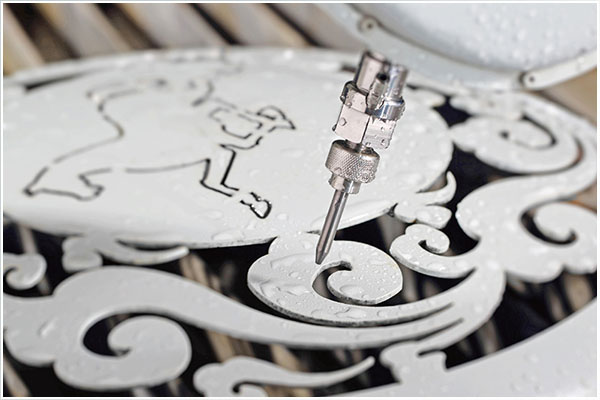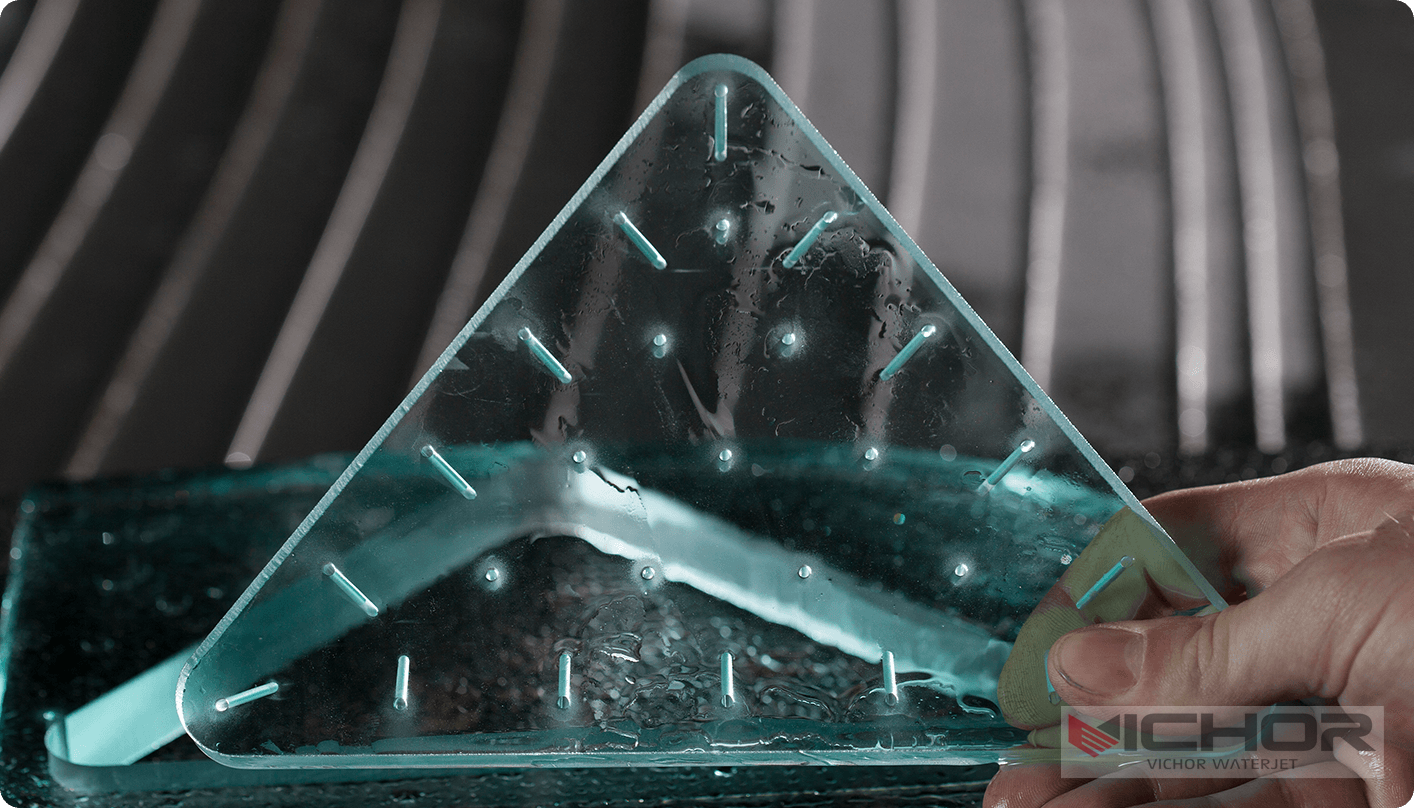
Water Jet Cutter: Unraveling the Mechanics Behind Precision Cutting
When people search for “water jet cutter how it works,” they’re often curious about how a stream of water can slice through metal, stone, or composites with such precision. This technology isn’t magic—it’s a sophisticated process that combines high-pressure water and abrasives to achieve clean, accurate cuts without heat damage. In this article, we’ll dive into the inner workings of a water jet cutter, explaining each step in detail, its applications, and why it’s a preferred method in many industries. Whether you’re a manufacturer, engineer, or hobbyist, understanding how a water jet cutter operates can help you appreciate its versatility and efficiency. Let’s start by exploring the fundamental principles that make this machine so effective.
What Is a Water Jet Cutter?
A water jet cutter is a industrial tool that uses a high-velocity stream of water, often mixed with abrasive particles, to cut a wide range of materials. Unlike traditional cutting methods that rely on heat or blades, this process is cold-cutting, meaning it doesn’t generate heat-affected zones. This makes it ideal for materials sensitive to temperature changes, such as plastics, metals, and ceramics. The core of how a water jet cutter works lies in its ability to focus immense pressure into a fine jet, enabling it to erode material with precision. Commonly used in manufacturing, aerospace, and art industries, water jet cutters offer flexibility and accuracy that other methods can’t match.
The Core Components of a Water Jet Cutting System
To grasp how a water jet cutter works, it’s essential to know its key parts. The system typically includes a high-pressure pump, an intensifier, a cutting head, and a abrasive delivery system. The pump generates pressure up to 90,000 psi, while the intensifier amplifies this force. The cutting head directs the jet, and if abrasives are used, they’re mixed in to enhance cutting power. Understanding these components helps explain the seamless process of water jet cutting, as each part plays a vital role in transforming water into a powerful cutting tool.
Step-by-Step Process: How a Water Jet Cutter Works
The process of how a water jet cutter works begins with water preparation. Ordinary water is filtered and pressurized by the pump, reaching extreme levels. This high-pressure water is then forced through a small nozzle, creating a supersonic stream. In abrasive water jet cutting, garnet or other abrasives are added to the mix, increasing the cutting capability for harder materials. The jet exits the nozzle at speeds over twice the speed of sound, impacting the material and eroding it layer by layer. This step-by-step approach ensures precise cuts, with CNC controls guiding the path for complex shapes. By learning how a water jet cutter works in stages, users can optimize settings for different materials.
Types of Water Jet Cutters: Pure Water vs. Abrasive Water Jets
When examining how a water jet cutter works, it’s important to distinguish between pure water jets and abrasive water jets. Pure water jets use only high-pressure water and are suitable for softer materials like foam, rubber, or food products. They produce clean edges without contamination. In contrast, abrasive water jets incorporate particles like garnet to cut through hard substances such as steel, titanium, or stone. This variation in how a water jet cutter works allows for customization based on material hardness and desired finish. Many systems can switch between modes, making them adaptable for diverse projects.
Advantages of Using Water Jet Cutting Technology
One reason people ask “water jet cutter how it works” is to understand its benefits. This method offers numerous advantages, including no heat distortion, which preserves material integrity. It also allows for omni-directional cutting, meaning it can handle intricate designs without tool changes. Additionally, water jet cutting is environmentally friendly, as it uses water and natural abrasives, reducing waste. By comprehending how a water jet cutter works, users can leverage these perks for improved efficiency and cost savings in production.
Common Applications in Various Industries
The versatility of how a water jet cutter works makes it useful across many fields. In automotive manufacturing, it cuts gaskets and metal parts precisely. The aerospace industry relies on it for shaping composites and alloys without compromising strength. Artists use water jet cutters to create detailed sculptures from glass or stone. Even in construction, it helps with tile and stone cutting. Each application highlights the adaptability of the water jet cutting process, demonstrating why it’s a go-to solution for complex tasks.
Factors Influencing the Cost of Water Jet Cutting
When considering how a water jet cutter works, cost is a key factor. Expenses depend on material type, thickness, and cutting speed. Abrasive consumption can add to operational costs, but the efficiency often offsets this. Maintenance of high-pressure components also plays a role. By understanding how a water jet cutter works, businesses can budget effectively, balancing precision with affordability. This knowledge helps in selecting the right setup for specific needs.
Maintenance and Safety Tips for Optimal Performance
To keep a water jet cutter functioning smoothly, regular maintenance is crucial. This includes checking nozzles for wear, monitoring pressure levels, and replacing filters. Safety measures, such as wearing protective gear and ensuring proper enclosure, are vital due to the high-pressure involved. Knowing how a water jet cutter works aids in preventative care, reducing downtime and extending the machine’s lifespan. This practical insight ensures reliable operation in any setting.
Comparing Water Jet Cutting to Other Methods
People often explore “water jet cutter how it works” to compare it with laser or plasma cutting. Unlike laser, water jet cutting doesn’t generate heat, avoiding material warping. It also handles thicker materials better than plasma cutting. However, it may be slower for some applications. This comparison shows how a water jet cutter works uniquely, offering a cold-cutting alternative that excels in precision and material versatility.
Future Trends in Water Jet Cutting Technology
As technology evolves, so does how a water jet cutter works. Innovations like smarter CNC controls and improved abrasive recycling are enhancing efficiency. Research into higher pressure systems could expand capabilities further. Staying updated on these trends helps users maximize the benefits of water jet cutting, ensuring they remain competitive in their industries.
Frequently Asked Questions About Water Jet Cutting
Q1: What materials can a water jet cutter handle?
A1: A water jet cutter can cut a wide variety of materials, including metals like steel and aluminum, stones such as granite, composites, glass, plastics, and even delicate items like foam or rubber. The key to how a water jet cutter works lies in its adaptability—using pure water for softer materials and adding abrasives for harder ones, ensuring clean cuts without heat damage.
Q2: How accurate is water jet cutting?
A2: Water jet cutting is highly accurate, typically achieving tolerances within ±0.1 mm. This precision stems from how a water jet cutter works, with CNC guidance controlling the jet’s path. It’s ideal for detailed designs and complex shapes, making it a top choice for industries requiring tight specifications.
Q3: Is water jet cutting environmentally friendly?
A3: Yes, water jet cutting is considered eco-friendly because it uses water and natural abrasives like garnet, which are non-toxic. The process generates minimal waste, and water can often be recycled. Understanding how a water jet cutter works reveals its low environmental impact compared to methods involving chemicals or heat.
Q4: What are the main disadvantages of water jet cutting?
A4: While learning how a water jet cutter works, you’ll find some drawbacks, such as slower cutting speeds for very thick materials and higher operational costs due to abrasive use. Nozzle wear can also require frequent maintenance. However, these are often outweighed by the benefits of precision and versatility.
Q5: Can water jet cutting be used for 3D shapes?
A5: Primarily, water jet cutting is used for 2D cuts, but with advanced setups, it can handle simple 3D profiling. The fundamentals of how a water jet cutter works involve a focused jet, which is best for flat surfaces, but multi-axis systems allow for some contouring on curved materials.
Q6: How long does a typical water jet cutter last?
A6: With proper maintenance, a water jet cutter can last 10-15 years or more. The longevity depends on how well the high-pressure components are cared for, as outlined in how a water jet cutter works. Regular checks and part replacements ensure durable performance.
Q7: What safety precautions are necessary when operating a water jet cutter?
A7: Safety is critical when dealing with how a water jet cutter works. Operators should wear protective eyewear and gloves, ensure the cutting area is enclosed to contain splashes, and follow lockout procedures during maintenance. High-pressure systems require trained handling to prevent accidents.
In summary, understanding how a water jet cutter works opens up possibilities for efficient, precise cutting across various fields. From its mechanical process to practical applications, this technology continues to evolve, offering solutions that blend innovation with reliability. If you’re considering integrating water jet cutting into your workflow, this overview provides a solid foundation to build upon.
continue reading




